Modlin 2013-08-12
35th Bomber Aviation Regiment.
35th Bomber Training Regiment.
1952 – 1958
Modlin airport. Geographic coordinates: 52.451N 20.652E.
The beginnings of the formation of 35 PLB.
Under the Order of the Minister of National Defence, Konstanty Rokossowski, No. 096/Org of September 11, 1951, the third (after the 7th and 33rd PLB) bomber regiment, the 35th PLB, was formed as part of the 15th Bomber Aviation Division. The regiment was to be formed in the period from May 1, 1952 to December 1, 1952. The place of formation was the Bydgoszcz Airport. Captain Kazimierz Wierzbicki was appointed the commander of the 35th PLB. For one of the possible locations of the 35th PLB, the Inowrocław-Latkowo Airport was considered, but ultimately the regiment was formed in Bydgoszcz.
The first soldiers of the new regiment came from the 7th PLB, which was then stationed in Malbork. The staff of the 35th PLB, after arriving from Malbork to Bydgoszcz, began to receive assignments.
The commander of the 15th Bomber Aviation Division, by organizational order No. 0105 of August 18, 1952, appointed the command of the 35th PLB composed of: the commander of the regiment, Capt. drink Kazimierz Wierzbicki, deputy commander of the regiment for political and educational matters, Capt. Stanisław Zdun, chief of staff of the regiment of Capt. Stanisław Cichocki, assistant to the commander of the regiment for pilotage, Capt. drink Julian Paździor, senior engineer of the Russian regiment, Capt. Danił Popow, senior navigator of the regiment, Lieutenant Bronisław Plachta, operational officer of the regiment, Lieutenant Józef Pomianowski, chief of communications of the regiment, Second Lieutenant Tadeusz Hinc, head of air shooting of the regiment of second lieutenant Stanisław Garbowski, reconnaissance officer of second lieutenant Janusz Nowakowski, personnel officer of second lieutenant Czesław Pałasz, senior physician of the regiment, lieutenant Jan Kotecki, head of the secret office of Sgt. Henryk Szykowski.
Personnel composition of squadrons in 35 PLB: 1st Air Squadron: Cpt. drink Zygmunt Michnowski - commander, second lieutenant Marian Sikorski - chief of staff of the squadron, lieutenant navigator. Zygmunt Gumiński - squadron navigator, Lieutenant Ludwik Kozłowski - squadron engineer, Warrant Officer Władysław Sucharzewski - squadron communication officer. 2nd Air Squadron: second lieutenant Janusz Nowakowski - chief of staff of the squadron, second lieutenant navigation Henryk Droździk - squadron navigator, warrant officer Stefan Ziomek - squadron communication officer.
Until the end of September 1952, the structure of the regiment was organized and tasks and duties were distributed. On October 1, 1952, the commander of the 35th PLB issued the first regimental order, in which it was written: "I order the 35th PLB to be redeployed in two throws from the Bydgoszcz airport junction to the Inowrocław airport junction. The date of ferrying the ground projections (rail and car) was set for October 5, 1952. Lieutenant Józef Pomianowski was appointed the commander of the railway projection. The car transport was commanded by Lt. Wojciechowski. In a combat roll, 9 aircraft were air-fed, including: seven Pe-2 FT bombers, one UPe-2 training and combat aircraft and one Po-2 training and training aircraft.
This ferrying was necessary due to the tightness in Bydgoszcz at the Szwedowo airport. Locating the 35th PLB in Inowrocław was a deliberate solution. It is true that the airport had only a grassy take-off field, but this did not prevent the operation of piston bombers. The distance between the airport in Bydgoszcz and the airport in Inowrocław is only 45 km. Therefore, the 35th PLB could continue to use technical support in Bydgoszcz.
The documents show that the 35th PLB took over all the piston bombers of the division, while modern Il-28 bombers took over the 7th PLB and the 33rd PLB. With the acceptance by the units of the 15th DLB of the first Il-28 and UIl-28 jet aircraft, another batch of piston aircraft was transferred to the 35th PLB from the 7th and 33rd PLB: three Tu-2, three Pe-2 FT, one UPe -2 and one Po-2. In this way, the account of the 35th PLB increased to 17 aircraft, including: 13 combat, 2 training and training and 2 training and training.
In the autumn of 1952, the personnel of individual squadrons in the regiment was still replenished. The commander of the 2nd Air Squadron was appointed Capt. drink Eugeniusz Wielkoszewski, the duties of the engineer of the 2nd Squadron were taken by Lieutenant Edmund Maciejewski, while the senior navigator of the regiment was Capt. navigation Michal Procek.
As the third regiment in the 15th Bomber Aviation Division, the 35th PLB was treated more for art than combat. It is true that it was planned to be armed with Il-28 aircraft, but in fact it received a legacy of 7 and 33 PLB in the form of old Pe-2, Tu-2 and Po-2 training and liaison bombers. Pe-2 aircraft in the Polish Army had a bad reputation. Many planes crashed during training flights and there were casualties among the airmen.
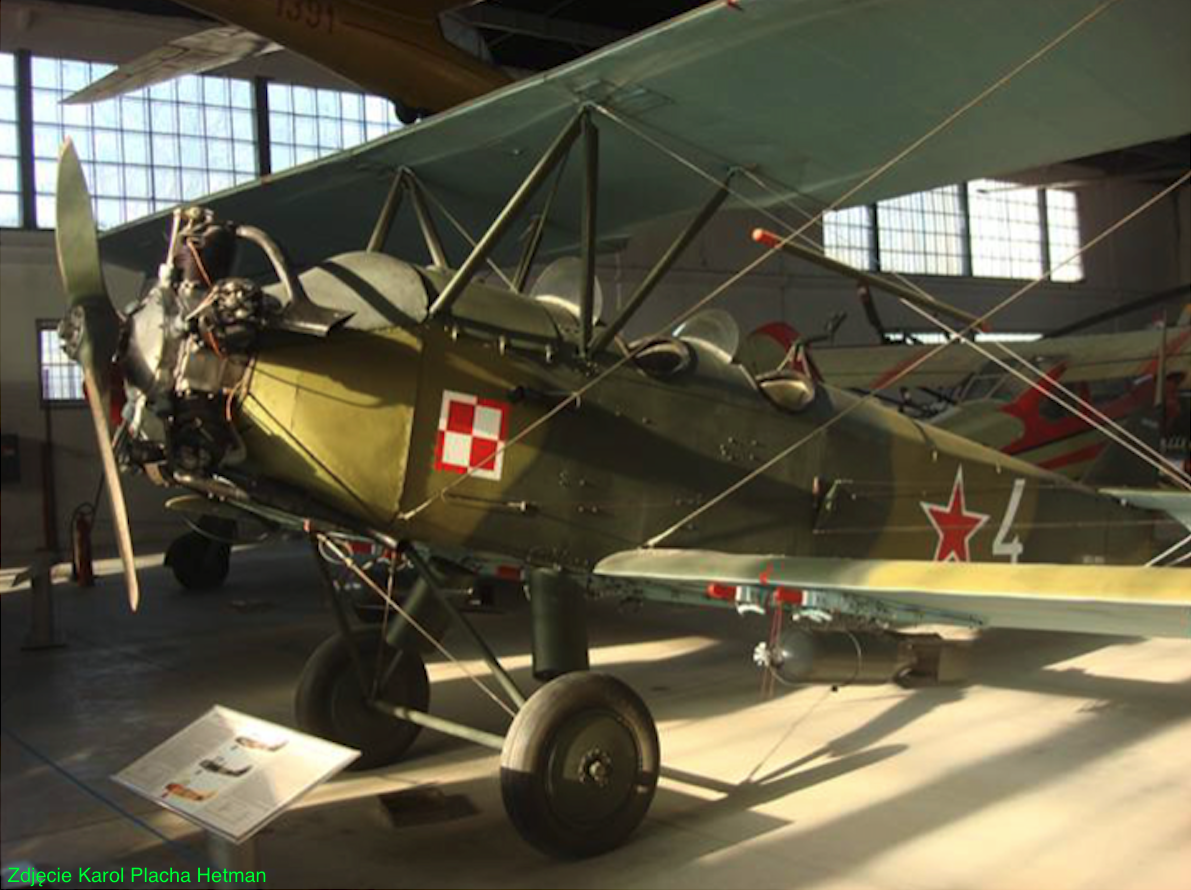
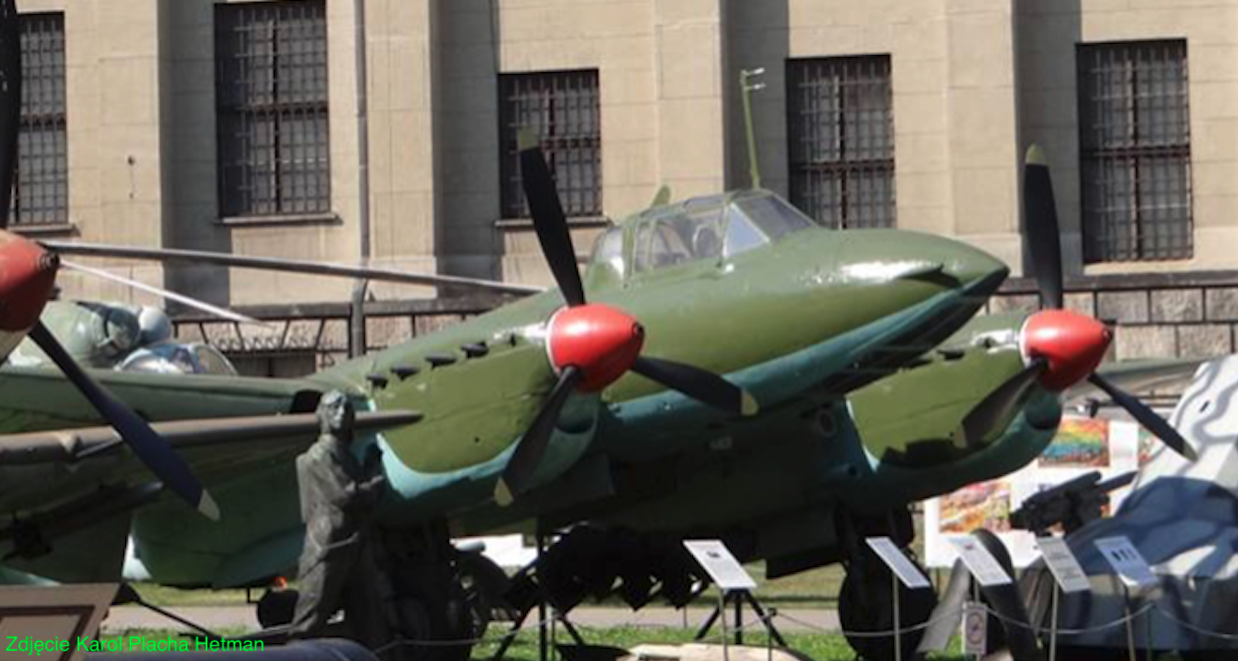
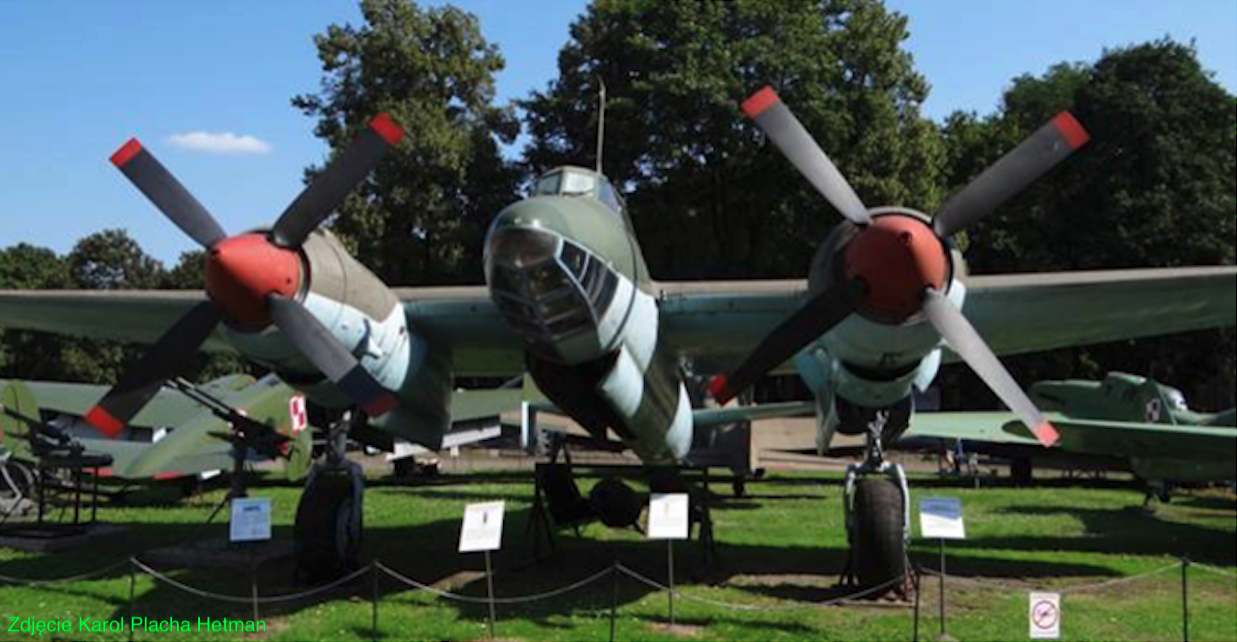
At the beginning of February 1953, the command of the 35th PLB received its first task, which was to secure exercises at the Mrzeżyno training ground. The task was to cooperate with anti-aircraft artillery. Designated crews were to tow the sleeves into which the practicing Air Defense units were shooting. The commander of the regiment appointed two crews to secure the shootings: The first: Lt. pil. Zdzisław Szczucki, as the commander of the "Świdwin" group, cf. navig. Marian Szulc, as the group's navigator and gunner-radio operator, Warrant Officer Stefan Ziomek - as the group's communications chief. Second: Lt. drink Starzyński, as deputy for political affairs of the group, navigator navigator. Chwostek navigator and Cpl. Barczak gunner-radio operator. Sec. Zygmunt Pawlaczyk. The crews flew from the Inowrocław airport to the Świdwin airport, where they stayed from February 1, 1953 to March 31, 1953.
At the beginning of May 1953, the command of the 35th PLB was again tasked with securing exercises in firing anti-aircraft artillery at the Mrzeżyno and Ustka training grounds. To perform this task, two crews were assigned to tow the liners over the Mrzeżyno training ground and one crew to the Ustka training ground.
The crews securing the firing over the Mrzeżyno training ground included: The first crew: Capt. drink Eugeniusz Wielkoszewski commander of the group at the Świdwin airport, cf. navig. Marian Szulc, Warrant Officer Stefan Ziomek Chief of Communications. Second crew: Lt. pil. Leon Jędrzejczyk, second lieutenant navigation Cocot, plat. gunner-radio operator Jaworowski. On the other hand, one crew was to be based at the Wicko Morskie airport, consisting of: second lieutenant drink Starzyński, Lt. navigation Szczerba and the gunner-radio operator spl. Bischof. The following were appointed as technicians for individual groupings: at the Świdwin airport - second lieutenant Michałek, in Wicko Morskie - second lieutenant Henry the Heavy. These crews carried out their tasks in the period from May 15, 1953 to August 15, 1953.
Another task related to tactical and operational training was the participation of the crew of the 35th PLB on the Tu-2 aircraft in the exercise for the benefit of the 5th DLM OPL stationed at the Warsaw Bemowo Airport (Babice). The crew consisting of Lt. drink Zygmunt Michnowski, cf. navigator Bernard Gabis and gunner-radio operator 2nd Lt. Wladyslaw Sucharzewski. The task was carried out in the period of 15-30.06.1953, performing mock flights for the practicing fighters of the division.
The 35th PLB did not stay at the Inowrocław Airport for long. As part of improving the dislocation of air units, in accordance with the order of the Air Force Commander on September 11-16, 1953, the 35th PLB was transferred to the Przasnysz Airport. This airport facility also has a grassy take-off field, and its infrastructure was very modest for the needs of a bomb regiment. The distance from Inowrocław Airport to Przasnysz Airport is 201 km.
After reporting that the regiment was ready to receive the regiment at the new airport, on September 11, 1953, at 7:00 am, the commander of the regiment, major pil. Kazimierz Wierzbicki, as the leader of the first aerial throw. Subsequently, the following took off: at 7:30 - two Po-2 planes, at 7:35 - captain's flight Eugeniusz Wilkoszewski, five minutes later the flight of Lieutenant Zdzisław Szczucki and, as the last one (at 7:38), the crew commanded by Capt. Eugeniusz Waszyrowski. After carrying out the first-line aircraft, the crews returned by the Lisunow Li-2 transport aircraft to the Inowrocław airport to carry out the second air-throw. At 12:09 the crews started the take-off in the same order as before. The first round throw will leave Inowrocław in the morning of September 11, 1953. The second circular echelon set off on September 13, 1953, after gathering the rest of the regiment's forces and resources.
By mid-September 1953, in a new location (airport in Przasnysz), the 35th PLB was ready for operation. The first undertaking was to prepare personnel and equipment for operation in winter conditions.
The year 1953 was characterized by very intensive training of all crews of the 15th DLB. This is evidenced by the number of hours flown. For example, the 35th PLB achieved 922.41 hours in the air, including: on combat aircraft - 550.39 hours; on training and combat aircraft - 60.53 hours; on school planes - 311.09 hours.
In 1953, the transiting pennant of the League of Friends of Soldiers was won by a crew from the 35th PLB, commanded by Capt. drink Eugeniusz Waszyrowski, in the skald: cf. navig. Bernard Gabis, gunner-radio operator Lt. Władysław Sucharzewski, aircraft technician Warrant Officer Bojarski, and mechanics: Plut. Lobaczewski and Cpl. Janos, Cpl. Windmill and Cpl. Petryka.
The worn-out equipment required many hours of intensive work from the technical staff, which was modest in terms of quantity. Most of the activities had to be done outdoors. There was no hangar at the Przasnysz-Sierakowo airport. There were also supply difficulties. Although the operated aircraft, the Pe-2, were relatively simple, they were subject to frequent failures. It should be remembered that this equipment was mostly produced during World War II and took part in it. The Klimow WK-105 engines were particularly unreliable. They were 12-cylinder, V-shaped engines. The quality of the materials used to make them left much to be desired. Therefore, their work characteristics were very different. They often overheated or leaked oil. The Tu-2 bombers looked much better. They were technically newer, although their production was also finished.
Ilyushin Il-28 bombers.
In mid-1954, the time came to train the last regiment in the 15th DLB, i.e. the 35th PLB, for new Iliuszyn Il-28 bombers. In accordance with the order of the Commander of the Air Force in connection with the start of training for new equipment, the 35th PLB, on May 20-22, 1954, moved from the Przasnysz Airport to the Modlin Airport. The distance between the airports is 75 km.
As the 35th Regiment was supposed to receive Il-28 jets in Modlin, the Pe-2 FT aircraft left at the airport in Przasnysz were left for scrapping. Two crews that stayed at the training ground in Świdwin flew the Tu-2 (tact. no. 05, 08), which on June 11, 1954, was handed over to the forming towing flight (Ordinance of the Chief of the General Staff of the Polish Armed Forces No. 0138/Org.). Thus, only three CSS-13 liaison aircraft (Po-2 of Polish production) were transferred to Modlin by air throw.
Until the end of May 1954, at the airport in Modlin, the personnel of the 35th PLB prepared a barracks and training base. At the same time, flying and technical personnel were selected and qualified for training on Il-28 jet bombers. Thus, all three Bomber Regiments constituting the 15th DLB were at the Modlin airport.
On June 6, 1954, the 35th PLB received the first two Il-28 bombers, which were intensively used for theoretical training classes. On September 25, 1954, the first crew of the 35th PLB under the command of Maj. drink Józef Ostrowski made an independent flight on the Il-28 aircraft. In the following months, the 35th PLB took on 12 more new bombers, including two trainer-combat aircraft. The training of the flying personnel for the new equipment was problem-free and relatively quick. The reason was the incomplete personnel of the Regiment. On the other hand, there was no shortage of instructors, as several pilots from the 7th PLB and 33rd PLB already had this type of qualification.
The new planes were low in failure, so it did not cause much trouble to the mechanics. In addition, the engines driving the Il-28 bombers were engines well known from the MiG-15 and Lim-1/2 fighters.
In 1954, during the annual briefing in the division, the results of the competition were announced: 1st place 7th PLB, 2nd place 35th PLB, 3rd place 33rd PLB.
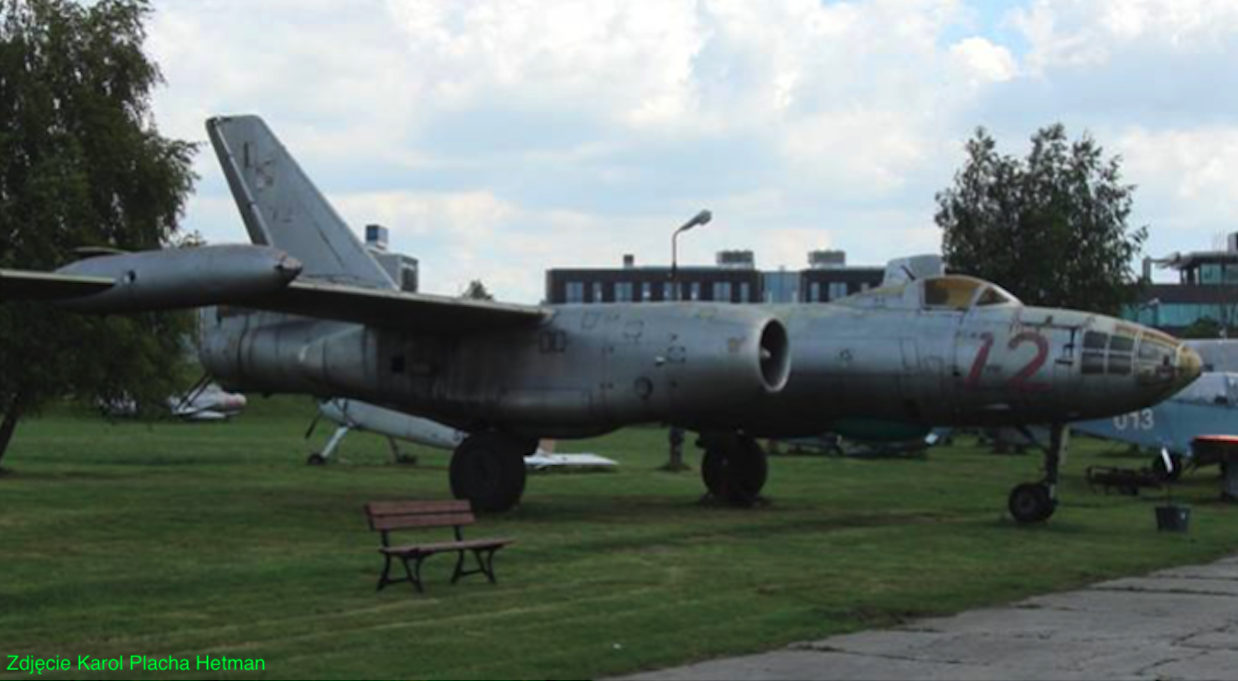
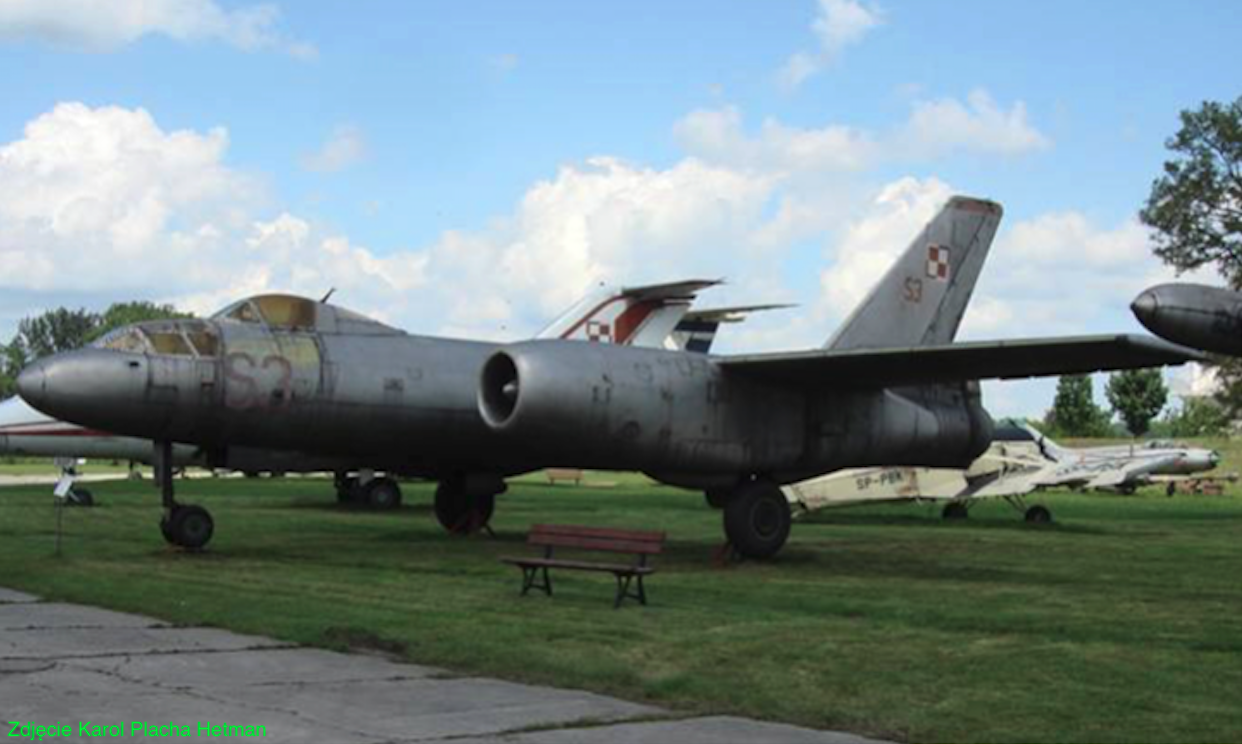
In 1955, deliveries of new aircraft to the 35th PLB continued. On June 9, 1955, a batch of 6 Il-28 aircraft (factory numbers: 56701, 56710, 56716, 56721, 56724, 56735) landed at the Modlin airport. In this way, the regiment reached full-time status - 20 Il-28 aircraft. Side numbers in the 15th DLB were assigned by the Il-28 aircraft in the Soviet way. They consisted of two numbers and a different color for each regiment. The 35th PLB was numbered 41 to 60, colored dark yellow with a navy blue border. Training and combat aircraft received a single-digit number preceded by the letter S. However, this situation did not last long and after a few years all aircraft had red numbers. The side numbers had no relation to the serial number of the aircraft. They were applied in the front part of the fuselage, on both sides and repeated in a smaller size on the vertical tail. Interestingly, there were also high side numbers; for example, 133, although Poland bought a total of only 98 Il-28 machines of all versions.
In 1955, the 15th Division was obliged to transfer 12 Il-28 aircraft, four from each Regiment, to the 21st Independent Reconnaissance Aviation Regiment in Sochaczew. As the basic aircraft in this Regiment, there were Il-28 R in the number of 8 aircraft and one UIł-28. Unit 35. PLB handed over Il-28 aircraft nb 41, 42, 43, 44.
In mid-June 1955, the division commander received an order to field Il-28 aircraft for the parade over Warsaw on July 22, 1955. Il-28 aircraft were to be demonstrated in three groupings. The first grouping was to be fielded by the 7th PLB (15 Il-28 aircraft), the second by the 33rd PLB (12 Il-28 aircraft), the third by the 35th PLB (9 Il-28 aircraft), the 21st SPLR (independent reconnaissance aviation regiment, 6 aircraft Il-28). Trainings were initially conducted in the key warehouses, later in the entire bomb throw group.
The crews for the parade took off and landed at the Modlin airport, and the starting order was as follows: 1. parade leader, assisted by two fighters. The 2nd aircraft column led by Maj. A. Kwiatkowski. The 3rd Aircraft Column led by Maj. J. Wójcik. The 4th aircraft column led by Maj. J. Ostrowski.
Another year ended with a high rating of the 15th DLB. The competition was repeated from the previous year. In addition, the 7th PLB and 35th PLB ended the year without any accidents, which was a huge success.
In 1956, the division received another delivery of nine Il-28 aircraft, which supplemented the shortages after the aircraft transferred to Sochaczew. The planes were distributed three to each regiment. On January 17, 1956, two Il-28s with serial numbers: 56606209, 56606216 were entered into the status of the 35th PLB, and on January 27, 1956, another aircraft No. 56606212.
At the end of June 1956, all regiments of the division were placed in a state of full combat readiness, but this state was not maintained for long. It was related to the unrest and strike of workers that took place in Poznań and, as a consequence, the movements of the Red Army troops stationed in Poland.
In accordance with the order developed by the WL Command and OPL OK, in December 1955, in May 1956, the organization of the third squadron in the 35th PLB began. In September 1956, the 3rd Air Squadron was formed with the task of starting in 1957, training flying personnel. This decision was related to the dismantling in OSL-4 in Dęblin, the training course for attack and bomber pilots. In fact, this squadron became a training squadron. Lieutenant pil. Edmund Ziaja, his deputy for political affairs was Lieutenant Tadeusz Majch, Lieutenant Bogusław Pałka took over the duties of the chief of staff, Lieutenant Jan Sułkowski became the navigator of the squadron, and Lieutenant Henryk Cieszki became the engineer.
During the summer of 1956, the 15th DLB made 70% of the overall raid, a significant effort by all personnel. At the end of 1956, the division achieved another record for hours flown. For example, the 35th PLB achieved a high flight time of 1,321.09 hours, of which as much as 859.14 in combat aircraft, and won the 1st place in the competition for the first time.
In 1957, the deliveries of Il-28 aircraft to Poland ended. In 1952-1957, Poland bought a total of; 73 Il-28 aircraft, 16 UIl-28 (Il-28 U) aircraft and 9 Il-28 R aircraft. Units in which Il-28 aircraft were operated: 15th DLB (7th PLB, 33rd PLB, 35th PLB ) in Modlin, and later also in Powidz. OSL-4 in Dęblin; several aircraft for a short period (1953-1957). 21st SPLR in Sochaczew; including 6 Il-28 R aircraft. 15th SELR in Siemirowice; including 3 Il-28 R aircraft. 19th EH (tow squadron) in Słupsk.
With the advent of 1957, at the personnel meeting of the 35th PLB, the command read the organizational order of the Commander of WL and OPL OK, in which the regiment was changed from bomb to training and combat. So the regiment was named 35 PLSzk-B, and only the 7th PLB and 33rd PLB remained typical bomber regiments.
On July 4, 1957, the 7th PLB was transferred from Modlin to the Powidz airport. Powidz became a permanent base for the 7th PLB. units; The 33rd PLB and the 35th PLSzk-B remained in Modlin.
In June 1957, the commander of the 15th DLB was given the task of preparing separate forces and resources for the air shows and parade on the occasion of the Aviation Day. Powidz was designated as the airfield of the 15th DLB parade group, with the 7th PLB as its new host. On August 12–16, 1957, the assigned forces and resources of the 35th PLB were transferred to Powidz to conduct parade training. The combat flight of 10 crews + 2 spares took place on August 16, 1957, along the route: Modlin-Barłogi-Powidz. An interesting fact was that among the personnel designated for the parade there were six trained crews. For three weeks, the personnel of the 15th DLB trained for the parade, initially in groups of five-plane wedges, and later in two groups, each with 25 Il-28 aircraft.
The parade took place on September 8, 1957, over the Warsaw Bemowo (Babice) airport. The bomber aviation group was led by Col. drink Julian Paździor, assisted by four fighter planes piloted by veterans of the Polish Air Force in the West. The first group of bombers (a column of wedges - 25 Il-28 aircraft) was led by the commander, Major Pil. Jerzy Wojcik. In this column, the first three wedges (15 Il-28 aircraft) came from the 7th PLB, the next two (10 Il-28 aircraft) were fielded by the 35th PLB. The second column was entirely represented by the 33rd PLB led by Maj. drink Jerzy Adamiec. After the parade, the personnel of the 15th DLB gathered at the airport in Powidz were visited by the commander of WL and OPL OK, Brig. drink Jan Frey-Bielecki, who thanked all participants for the excellent performance of this difficult task.
Immediately after this parade, the division was given another task to take part in the shows and parade over Lodz. However, on September 14, 1957, due to bad weather conditions over Łódź, only a group of bombers flew under the command of Maj. pilot Józef Czernecki. The flight took place along the route: Modlin-Łowicz-Zgierz-Łódź-Skierniewice-Modlin.
Another presentation of bomber aviation by the crews of the 15th DLB was the participation in September 1957, shows over the southern regions of Poland. On September 20, 1957, a flight of Il-28 commanded by Maj. J. Czerneckiego relocated to Mierzęcice, from where on September 22, 1957, he flew as part of the regional air parade over Krakow and a little later over Katowice. This time the flight route was as follows: Mierzęcice-Tarnowskie Góry-Kraków-Dąbrowa Górnicza-Katowice-Mikołów-Mierzęcice. For the Polish Army Day, the division command planned a ceremony of handing over the banners to the 33rd and 35th regiments, funded by the State Council. On October 12, 1957, subunits of the 15th DLB lined up on the parade ground. After welcoming the guests, the commander of the ceremony reported Brig. Gen. Eugeniusz Kuszko about readiness to start the ceremony. The acts of granting were read out and the new banners were handed over to both commanders. Major Pil. Jerzy Adamiec and Capt. diploma drink Józef Czernecki, after presenting the banners in front of the regiments, and handed them over to the banner posts. Then there was a parade of sub-units led by flag carriers. After the ceremony, the Monument to the Heroes of the Defense of Modlin during the fighting in 1939 was unveiled in the Modlin Fortress. The monument was funded by the inhabitants and soldiers of the Modlin garrison.
On November 22, 1957, the finals of the competition for the title of "The best shooter-radio operator of the division" were held. The best player from the 35th PLB turned out to be Sgt. Jan Reszuto.
Completing flight training in 1957, the division once again achieved a record-breaking raid. For example, the 35th PLB achieved 1,851.28 hours of flight time, including 1,251 hours on combat aircraft, 229 hours on combat trainers and 351.28 hours on training aircraft. During the training briefing held at the division level, the regiment again took the first place in the summary.
Organizational structure of the 35th PLB (1957): command and staff, 1st air squadron (9 Il-28 aircraft), 2nd air squadron (9 Il-28 aircraft), 3rd training air squadron (6 UIl-28 aircraft), technical squadron.
Solution 35. PLB.
In 1958, there were further significant changes to the 15th DLB. The reason was the rapid crumbling of Il-28 bombers capable of flying. It was all the more strange that the oldest machines had only six years of service and in peace conditions. We estimate that the "crushing" of the planes was the official reason. Savings is more likely. Poland was already after the political thaw of 1957, and our country could not afford to maintain such a large army. In addition, Poland did not have enough properly trained crews. Let us remind you that in 1953, when the 35th PLB was rebasing from Inowrocław to Przasnysz, the crews had to return by Li-2 plane for the second part of the bombers. The dissolution of the 35th PLB made it possible to supplement the personnel of the other two regiments to a level ensuring proper performance of tasks.
There is no doubt that in view of this situation, at the request of the Operational Aviation Command, the management of the Ministry of National Defense decided to disband the 35th PLB, and the aircraft were ordered to be transferred to the 7th PLB in Powidz and to the 33rd PLB in Modlin. Until the end of May 1958, i.e. until liquidation, the 35th PLB conducted training in the air, performing 1,417 flights during 632 hours and 11 minutes. On May 24, 1958, the regiment in the squadron took part in a tactical exercise of the land forces, providing them with support at the training ground in the area of Nieszawa-Włocławek-Lipno. Nine crews under the command of Maj. Józef Czernecki. It was the last aviation project carried out by the 35th PLB.
On May 19, 1958, the order of the Ministry of National Defense No. 05/Org. ordering the Operational Aviation Commander to disband the 35th PLB. The personnel, soldiers of the conscript service and the equipment and equipment of the regiment were ordered to be distributed within the 15th DLB. On the basis of this order, the Operational Aviation Commander developed order No. 055/Org of May 27, 1958. On the basis of these orders, the Commander of the 15th DLB issued Executive Order No. 047 of May 30, 1958, in which he ordered the dismantling of the 35th PLB by June 15, 1958. The last assembly of the entire 35th PLB personnel took place on June 8, 1958, at the assembly square. At the rally, the banner was said goodbye and soldiers departing to other garrisons.
During the period of operation of the 35th PLB, the regiment's flying personnel made a total of 6,704 hours and 8 minutes. The 35th PLB operated for only 7 years. Operated bombers only; Pe-2, Tu-2, Il-28. Subsequently stationed; Bydgoszcz, Inowrocław, Przasnysz and Modlin.
Commanders of 35 PLB / 35 PLSzk-B:
Major Kazimierz Wierzbicki (August 15, 1952-June 25, 1954), Major Józef Ostrowski (June 25, 1954-October 26, 1956), Major Zdzisław Szczucki (October 26, 1956-August 17, 1957), Major Józef Czernecki (August 17, 1957) 1957-15/06/1958).
Written by Karol Placha Hetman
